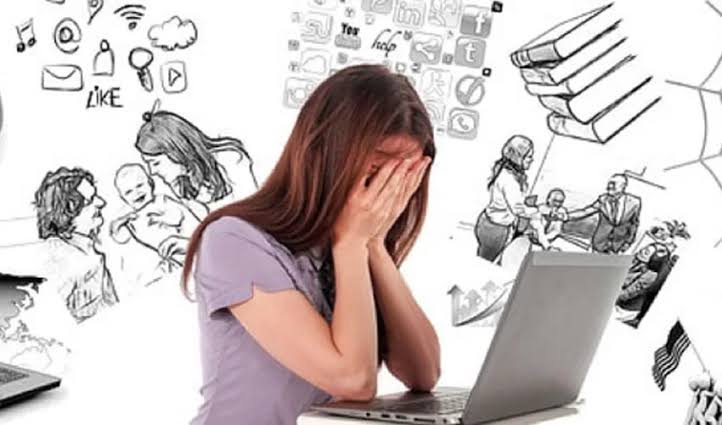Technology has become a central part of daily life, transforming how people communicate, work, learn, and even manage their emotions. While it brings undeniable convenience and opportunities for connection, it also presents new challenges that can affect mental well-being. The relationship between technology and mental health is complex—offering both support and risk depending on how it is used, the age group involved, and the type of technology.
In recent years, mental health professionals have increasingly studied this intersection to better understand its benefits and drawbacks. From mobile apps and teletherapy platforms to social media and video games, the effects of technology are widespread and nuanced. For individuals, families, and institutions, navigating this digital landscape requires awareness, balance, and informed choices.
The Rise of Digital Anxiety and Stress
One of the most significant impacts of technology is the increase in anxiety and stress levels, particularly due to excessive screen time, social comparison, and information overload. Notifications, emails, and social media alerts create a sense of constant urgency. This “always on” mentality leads to chronic stress and difficulty disconnecting from work or social obligations.
Social media platforms, in particular, have been linked to increased anxiety. The curated lifestyles and highlight reels presented on apps like Instagram or TikTok often cause individuals—especially teenagers and young adults—to compare themselves unfavorably with others. This can trigger feelings of inadequacy, loneliness, and even depression.
In addition, doomscrolling—spending excessive time consuming negative news—has become a common behavior during times of crisis or uncertainty. This habit is linked with heightened anxiety, sleep disruption, and reduced emotional resilience.
Technology and Sleep Disruption
The use of digital devices, especially close to bedtime, can disrupt natural sleep patterns. The blue light emitted from screens interferes with melatonin production, a hormone responsible for regulating sleep. Poor sleep hygiene is strongly associated with increased risk of depression, anxiety disorders, and irritability.
Many people, including children, use smartphones or tablets in bed, which delays sleep onset and shortens sleep duration. Over time, this chronic sleep deprivation can impair cognitive function, emotional regulation, and overall well-being.
Establishing screen-free zones or limiting device usage before bed can significantly improve sleep quality and mental health.
The Role of Social Media in Shaping Self-Esteem
Social media plays a pivotal role in shaping self-perception and identity, particularly among youth. The pressure to gain likes, followers, or validation through online engagement can lead to obsessive behavior and dependency on external approval.
Cyberbullying, another serious concern, is easier to execute and more damaging when conducted online. Victims often suffer from long-term effects including anxiety, social withdrawal, and low self-esteem.
However, not all effects are negative. When used thoughtfully, social media can foster a sense of community and support, especially for marginalized groups. Online forums, support groups, and mental health advocacy pages can help people feel less alone in their struggles.
Technology as a Tool for Mental Health Support
Despite its risks, technology also offers innovative solutions to support mental well-being. Mental health apps, online counseling services, and digital therapy platforms have made mental healthcare more accessible than ever. Individuals who once faced barriers such as stigma, cost, or distance can now receive support from their devices.
Popular apps like Calm, Headspace, and Moodpath provide guided meditation, mood tracking, and stress management exercises. Teletherapy platforms allow people to connect with licensed therapists from the comfort of home, increasing privacy and convenience.
Artificial intelligence is also being used to detect early signs of mental distress through behavioral patterns and speech analysis. These tools are helping healthcare providers intervene before issues escalate.
Positive Uses of Gaming and Digital Interaction
Contrary to popular belief, gaming and online interactions are not always detrimental. Many individuals use games as a form of stress relief or social connection. Multiplayer platforms often provide a sense of community and belonging, particularly for people who struggle with social interaction in real life.
For neurodivergent individuals or those with anxiety, virtual environments can offer safer spaces to express themselves. Additionally, therapeutic games are being developed to treat conditions like PTSD, ADHD, and phobias through gamified cognitive behavioral therapy.
The key difference lies in moderation and intention. When digital interaction supplements, rather than replaces, real-world relationships and responsibilities, it can enhance mental well-being.
List of Ways Technology Negatively Impacts Mental Health
- Social comparison – leading to low self-esteem and dissatisfaction.
- Cyberbullying – resulting in depression, anxiety, or trauma.
- Screen addiction – impairing attention span and productivity.
- Sleep disruption – due to late-night screen use and overstimulation.
- Isolation – from replacing in-person interactions with digital ones.
- Overexposure to distressing news – increasing fear and anxiety.
Tips for Healthy Tech Usage
- Set time limits on social media and gaming apps.
- Establish digital detox routines weekly or monthly.
- Use blue light filters and avoid screens before bedtime.
- Choose mental wellness apps over passive scrolling.
- Schedule screen-free family time or physical activities.
- Follow positive, uplifting, and informative digital accounts.
Conclusion
The impact of technology on mental health cannot be categorized as wholly good or bad. Its effects depend heavily on how, when, and why it is used. While digital tools can offer support, convenience, and connection, they can also lead to stress, anxiety, and isolation if used excessively or unmindfully.
To harness the benefits of technology while minimizing harm, individuals must adopt a balanced approach. This includes self-awareness, intentional habits, and a willingness to seek help when needed. As society continues to innovate, the focus should remain on ensuring that technological advancement supports—not undermines—our collective mental health and well-being.




Social media and technology profoundly influence mental health, especially among youth, where pressures for online validation and risks like cyberbullying can harm self-esteem and well-being.
Interesting
I think it’s cons have out weighed it’s pros